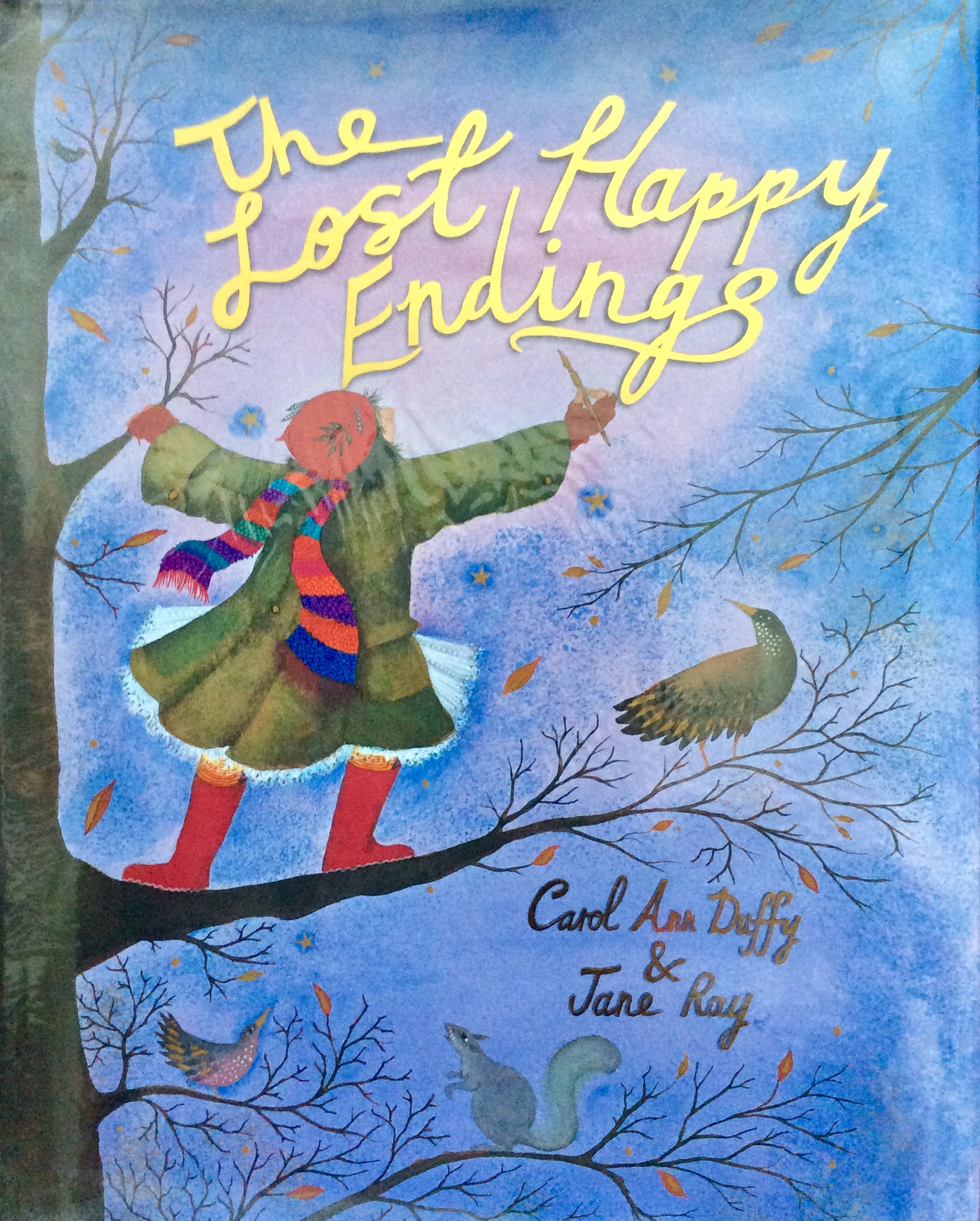Inspiring Young Readers
 posted on 14 Jun 2018
posted on 14 Jun 2018
‘The Lost Happy Endings' and the joys of a gold pen
I always like working with the children at Somers Park Primary School in Malvern. The two Year Three classes are lucky to have teachers who are very keen to develop and build on their love of books. I am regularly invited to go and talk to their classes, which I do with a large bag of beautiful books in tow.
This time was a bit different because I was asked to read an ‘inspirational’ picture book with a small group and to hopefully have some interesting discussion afterwards. This was a very exciting idea for me but, as ever, I had the dilemma about which book to choose to share with them. I needed to select one with stunning illustrations that would capture their interest and encourage them to look closely in a way that they couldn’t do so easily in a class session. Should I perhaps go for something with lots of twists and turns in the plot along with cleverly complex and multi layered illustrative layout like ‘The Adventures of the Dish and the Spoon’ by Mini Grey or ‘The Storybook Wolves’ by Lauren Child? Or should I take the opportunity for them to browse over a stunning wordless book like ‘The Arrival’ by Shaun Tan?
In the end I decided to plump for one illustrated by Jane Ray who is one of my favourites. I particularly love the way that she always uses gold to enhance the decorative nature of her brightly coloured paintings. After spending some happy time looking through my book collection, I chose ‘The Lost Happy Endings’ written by Carol Ann Duffy because I realised that such a relatively long picture book was one that I wouldn’t usually choose to read aloud. It tells the strange story of Jub, a girl who lives in the forest and has the important job of releasing happy endings to stories every evening at bedtime and then carefully gathering them back again in a sack when they return in the morning. The other compelling factor was that the poetic prose is exquisite and something that I wanted the children to relish. To make it a successful experience I practised reading it aloud a couple of times so that I knew in advance which phrases I wanted to emphasise. I have read it before but had forgotten that it is packed with descriptive phrases as well as being quite a menacing story with a very frightening witch who gets her comeuppance:
‘A twisted old woman with a face like the bark of a tree and horrible claw hands was standing on the path in front of Jub. She had fierce red eyes like poisonous berries.'
The teacher selected two boys and three girls for me to work with for half an hour and all seemed suitably impressed to see that my copy of the book was signed by the author and illustrator! They sat and listened spellbound and spent time looking at the gorgeous illustrations with me. When I had finished we had a bit of a chat and I was really surprised at some of their thoughtful comments:
‘I think it’s a good story because it makes you think that even if there are no happy endings, we need to try to find them because people need them if they have problems’
‘The happy endings pouring out of the sack remind me of a waterfall – they are a wordafall’
They then agreed to write letters to Jane Ray to tell her why they liked her illustrations and, because a magic gold pen features in the story, they used gold pens to make this a bit special. Although we only had about ten minutes left to do this, I think you will agree that the illustrated letters are outstanding. If you look closely you will see that Megan’s letter includes a wordafall which has several vertical sentences pouring down and that she also asks Jane about her favourite paintings. Hannah commends her illustrations because it ‘makes people imaginative and believe in things just like witches’. Fergus ‘couldn’t stop listening at all.’ Finlay liked the witch’s hair because ‘it looks like wires’ and Emily explained that ‘your pictures are really detailed and lovely’.
On reflection, I think it would be great to have some extra copies of the same book for them to look at while I read aloud. I have experienced this memorable approach when the author Aidan Chambers did an hour’s session with undergraduate students using ‘Where the Wild Things Are’ by Maurice Sendak. It was a real pleasure working with these five children who all clearly love books and enjoy talking and writing about them. I look forward to working with a different group of children next week and plan to use a different but equally beautiful picture book illustrated by Jane Ray.
Karen Argent
June 2018
(Click on any image below to view in slide show format)




